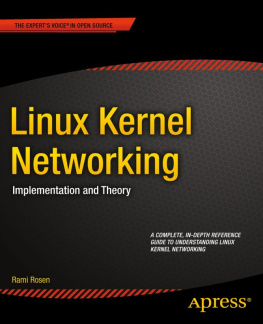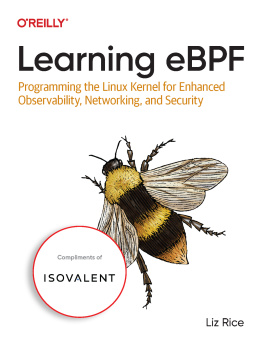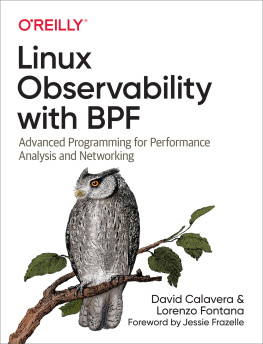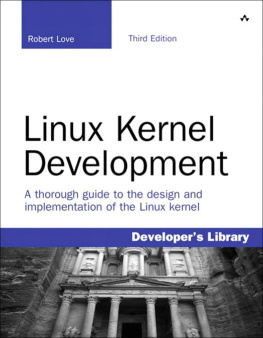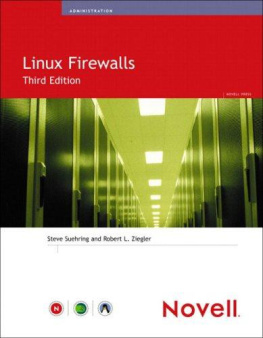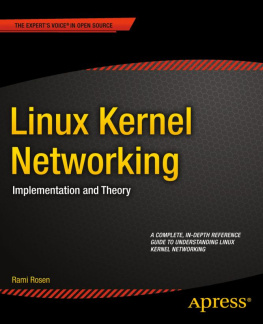1. Introduction
This book deals with the implementation of the Linux Kernel Networking stack and the theory behind it. You will find in the following pages an in-depth and detailed analysis of the networking subsystem and its architecture. I will not burden you with topics not directly related to networking, which you may encounter while reading kernel networking code (for example, locking and synchronization, SMP, atomic operations, and so on). There are plenty of resources about such topics. On the other hand, there are very few up-to-date resources that focus on kernel networking proper. By this I mean primarily describing the traversal of the packet in the Linux Kernel Networking stack and its interaction with various networking layers and subsystemsand how various networking protocols are implemented.
This book is also not a cumbersome, line-by-line code walkthrough. I focus on the essence of the implementation of each network layer and the theory guidelines and principles that led to this implementation. The Linux operating system has proved itself in recent years as a successful, reliable, stable, and popular operating system. And it seems that its popularity is growing steadily, in a wide variety of flavors, from mainframes, data centers, core routers, and web servers to embedded devices like wireless routers, set-top boxes, medical instruments, navigation equipment (like GPS devices), and consumer electronics devices. Many semiconductor vendors use Linux as the basis for their Board Support Packages (BSPs). The Linux operating system, which started as a project of a Finnish student named Linus Torvalds back in 1991, based on the UNIX operating system, proved to be a serious and reliable operating system and a rival for veteran proprietary operating systems.
Linux began as an Intel x86-based operating system but has been ported to a very wide range of processors, including ARM, PowerPC, MIPS, SPARC, and more. The Android operating system, based upon the Linux kernel, is common today in tablets and smartphones, and seems likely to gain popularity in the future in smart TVs. Apart from Android, Google has also contributed some kernel networking features that were merged into the mainline kernel.
Linux is an open source project, and as such it has an advantage over other proprietary operating systems: its source code is freely available under the General Public License (GPL). Other open source operating systems, like the different types of BSD, have much less popularity. I should also mention in this context the OpenSolaris project, based on the Common Development and Distribution License (CDDL). This project, started by Sun Microsystems, has not achieved the popularity that Linux has. Among the large community of active Linux developers, some contribute code on behalf of the companies they work for, and some contribute code voluntarily. All of the kernel development process is accessible via the kernel mailing lists. There is one central mailing list, the Linux Kernel Mailing List (LKML), and many subsystems have their own mailing lists. Contributing code is done via sending patches to the appropriate kernel mailing lists and to the maintainers, and these patches are discussed over the mailing lists.
The Linux Kernel Networking stack is a very important subsystem of the Linux kernel. It is quite difficult to find a Linux-based system, whether it is a desktop, a server, a mobile device or any other embedded device, that does not use any kind of networking. Even in the rare case when a machine doesn't have any hardware network devices, you will still be using networking (maybe unconsciously) when you use X-Windows, as X-Windows itself is based upon client-server networking. A wide range of projects are related to the Linux Networking stack, from core routers to small embedded devices. Some of these projects deal with adding vendor-specific features. For example, some hardware vendors implement Generic Segmentation Offload (GSO) in some network devices. GSO is a networking feature of the kernel network stack that divides a large packet into smaller ones in the Tx path. Many hardware vendors implement checksumming in hardware in their network devices. Checksum is a mechanism to verify that a packet was not damaged on transit by calculating some hash from the packet and attaching it to the packet. Many projects provide some security enhancements for Linux. Sometimes these enhancements require some changes in the networking subsystem, as you will see, for example, in ). Learning about how the various protocols are implemented by the Linux Kernel Networking stack and becoming familiar with the main data structures and the main paths of a packet in it are essential to understanding it better.
The Linux Network Stack
There are seven logical networking layers according to the Open Systems Interconnection (OSI) model. The lowest layer is the physical layer, which is the hardware, and the highest layer is the application layer, where userspace software processes are running. Lets describe these seven layers:
The physical layer: Handles electrical signals and the low level details.
The data link layer: Handles data transfer between endpoints. The most common data link layer is Ethernet. The Linux Ethernet network device drivers reside in this layer.
The network layer: Handles packet forwarding and host addressing. In this book I discuss the most common network layers of the Linux Kernel Networking subsystem: IPv4 or IPv6. There are other, less common network layers which Linux implements, like DECnet, but they are not discussed.
The protocol layer/transport layer: Handles data sending between nodes. The TCP and UDP protocols are the best-known protocols.
The session layer: Handles sessions between endpoints.
The presentation layer: Handles delivery and formatting.
The application layer: Provides network services to end-user applications.
Figure shows the seven layers according to the OSI model.
Figure 1-1.
The OSI seven-layer model
Figure shows the three layers that the Linux Kernel Networking stack handles. The L2, L3, and L4 layers in this figure correspond to the data link layer, the network layer, and the transport layer in the seven-layer model, respectively. The essence of the Linux kernel stack is passing incoming packets from L2 (the network device drivers) to L3 (the network layer, usually IPv4 or IPv6) and then to L4 (the transport layer, where you have, for example, TCP or UDP listening sockets) if they are for local delivery, or back to L2 for transmission when the packets should be forwarded. Outgoing packets that were locally generated are passed from L4 to L3 and then to L2 for actual transmission by the network device driver. Along this way there are many stages, and many things can happen. For example:


